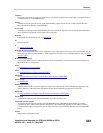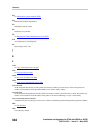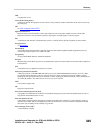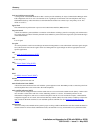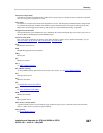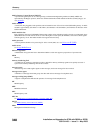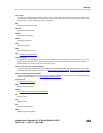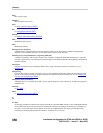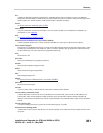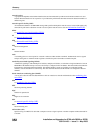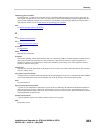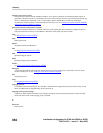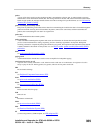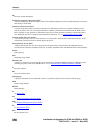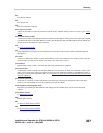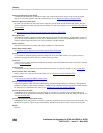
Glossary:
Installation and Upgrades for G700 with S8300 or S8700
555-234-100 — Issue 3 — May 2003
351
N+1
A method to determine equipment requirements for redundant backup. The N+1 method provisions one additional
element more than the number of elements that are required under full load. For example, if a DC-powered single-carrier
cabinet requires four rectifier modules, a fifth rectifier module is installed for backup.
NANP
See
North American numbering plan (NANP).
narrowband
A circuit-switched call at a data rate of 64 kbps or less. All switch calls that are not wideband are considered to be
narrowband. See also wideband
.
NAT
See
network address translation (NAT).
National Electrical Manufacturer’s Association (NEMA)
A trade association that develops a variety of technical standards for various parts of the electronics industry.
native terminal support
The presence of a predefined terminal type in switch software that eliminates the need to alias the terminal. That is, when
a terminal type is predefined in switch software, there is no need to manually map call appearances and feature buttons
for that terminal type onto some other natively supported terminal type.
NAU
Network access unit
NCA/TSC
Noncall-associated/temporary-signaling connection
NCOSS
Network Control Operations Support Center
NCSO
National Customer Support Organization
NEC
National Engineering Center
NEMA
See
National Electrical Manufacturer’s Association (NEMA).
NETCON
Network-control circuit pack
network
A series of points, nodes, or stations that are connected by communications channels.
network address translation (NAT)
A feature that enables a LAN to use one set of IP addresses for internal traffic, and a second set of IP addresses for
external traffic. Thus many IP addresses within an intranet can be used internally without colliding with public IP
addresses on the Internet. The NAT device allocates a public IP address only when IP entities require service outside the
firewall.
network interface (NI)
A common boundary between two systems in an interconnected group of systems.
Network Inward Dialing (NID)
A features that a caller can use to dial directly to an extension number of the called user facility without assistance from
an operator.



